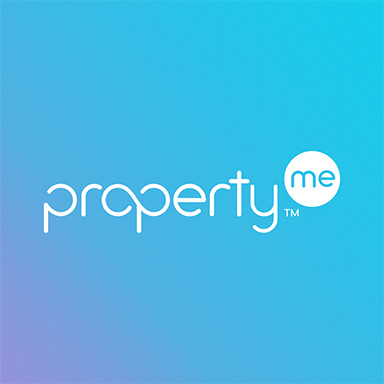Key Points
- Using technology can help you with the rental process and make it easy to fulfil your obligations as a tenant.
- Submitting maintenance requests as soon as there’s an issue can help to ensure the problem doesn’t become worse.
- Keeping up to date with the latest tenancy laws in your state or territory will help you if you ever run into any issues.
It’s no secret that renting a property in Australia can be quite a challenge.
Not only is it a long process to find the right property (especially if you’re a tenant with a pet or two), but even once you’ve moved in, you may still have to deal with rising rental costs, complicated tenancy agreements, and regular maintenance issues that can seem to just go on and on.
It’s no wonder many tenants find renting such a stressful experience.
For this reason, we’ve put together this quick tips guide with five great tips to help make your renting experience much simpler and easier. We’ve also included a summary of all the latest rental reforms across each state and territory of Australia to help keep you up to date on your rights as a tenant.
So, let’s get straight into it — here’s tip number one:
1. Keep a record of EVERYTHING
One of the best decisions you’ll ever make as a tenant is to keep a record of everything you do that’s related to your rental property. This includes making rental payments, as well as any communication with your landlord or Property Manager — emails, phone calls, the lot.
This way, you always have everything at your fingertips.
Of course, the easiest way to do this is with the PropertyMe Mobile App. With this app, you can effortlessly catalogue all your communication, rental payments, and more over the life of your tenancy.
2. Take advantage of rental technology
Using technology, such as online rental payment systems and rental reporting services, can help to make the rental process much more convenient.
Check out some of the most common rental apps and tenant technologies that you can use here in Australia to make renting easier:
PropertyMe Mobile App + PropertyMe MePay
These powerful tools have been designed to solve many of the common issues associated with renting in Australia.
Each help to streamline the rental process and allow for simple online communication and payment processing to make renting less daunting for you.
Ignite is a simple online platform that enables you to easily submit rental applications to multiple real estate agents at once, greatly increasing your chances of finding the right property for you.
Flatmates.com.au is a website and mobile app that helps you to find a roommate or shared housing option, making it simple to find someone who you can split rent and other costs with in the current rental market.
Homely not only provides you with access to hundreds of thousands of property listings, but it also offers reviews and ratings for many of the real estate agents and Property Managers in your area.
This makes it much easier to find a trustworthy and reliable Property Manager when searching for your next rental property.
3. Check the terms of your lease
This is a short but very important tip.
It’s always a good idea to read over all the terms and conditions of your lease agreement in detail and get a clear understanding of all your rights and responsibilities before putting pen to paper.
If not, you may have a difficult time arguing against or trying to change the terms of your lease agreement once you have signed it.
4. Try to submit maintenance requests as soon as you can
When you need repairs made to your rental property, try to let your landlord or Property Manager know as soon as possible so the issue can be taken care of before it becomes a major problem.
Once again, this is much easier when you’ve got technology on your side. The PropertyMe Mobile App makes the process of submitting maintenance requests a breeze.
Check out our step-by-step guide to submitting a Maintenance Request using the PropertyMe Mobile App:
- Log in to PropertyMe. You’ll need a login and password to access the platform.
- Find the Maintenance Request tool. This is usually located on the main dashboard or under the ‘Maintenance’ tab.
- Enter the details of your maintenance request. Whether you’ve got a leaking tap or a broken window, be as specific as possible to help your landlord or Property Manager understand the issue.
- Upload photos. It’s always a good idea to upload photos of your maintenance issue whenever you can. Again, this helps your landlord or Property Manager to better understand what’s going on and determine the next steps.
- Submit the maintenance request. Once you hit submit, your landlord or real estate agent will then be notified of the issue, and it will be up to them to follow it up.
It’s important to note that the PropertyMe Maintenance Request feature is just a reporting tool. It’s still up to your landlord or Property Manager to arrange for the repairs to take place.
If you don’t hear back from your landlord after submitting your maintenance request, it might be a good idea to follow up with them to make sure your problem will be addressed soon.
5. Understand your rights as a tenant
When you live in a rental property, you have the right to certain privileges — such as quiet enjoyment and reasonable repairs — and it’s important to know these things so you can advocate for yourself if ever you need to.
To help keep you up to date, here is a summary of some of the most recent rental reforms in each state and territory of Australia:
New South Wales
As of 2021:
- Rent increases in NSW can only be made once every 12 months.
- Landlords are now required to maintain a set of minimum standards for their rental property to be considered “fit for habitation”. This includes installing smoke alarms and ensuring adequate natural or artificial lighting in each room.
- Tenants are now within their right to make minor modifications to their rental property without consent. This includes hanging picture hooks or installing fly screens on windows.
Click here for a complete overview of tenancy laws and recent rental reforms in NSW.
Victoria
As of 2022:
- Landlords in Victoria can no longer unreasonably refuse a tenant’s request to keep pets at their rental property. If they wish to deny the request, they must apply to the Victorian Civil and Administrative Tribunal (VCAT) for approval based on reasonable grounds.
- Rent may only be increased once every 12 months.
- Tenants now have the right to make minor modifications to their rental property without their landlord’s consent.
Click here for a complete overview of tenancy laws and recent rental reforms in Victoria.
Queensland
As of 2022:
- Minimum housing standards will be phased in for all rental properties over 2023-24. All landlords must ensure their property meets these standards by 1 September 2024.
- A landlord can no longer evict a tenant without grounds. Instead, they need to specify a regulated reason for terminating the lease.
- Landlords can no longer apply a blanket ‘no pets’ rule to their rental property. They have to consider all requests by tenants to keep a pet and can only refuse the request on reasonable grounds.
Click here for a complete overview of tenancy laws and recent rental reforms in Queensland.
Australian Capital Territory
As of 2019:
- Landlords in the ACT may no longer unreasonably refuse a tenant’s request to keep a pet.
- Tenants are now within their right to make minor modifications to their rental property without consent.
More recently, a review of ACT tenancy laws was carried out, and the ACT Government is now considering several proposed changes to these laws to make renting fairer for all parties involved.
Click here for a complete overview of tenancy laws and recent rental reforms in the ACT.
Northern Territory
As of 2021:
- Tenants and landlords no longer need to negotiate to keep pets in the lease agreement. Tenants can now simply ask for consent to keep a pet, and landlords need to seek approval from the Northern Territory Civil and Administrative Tribunal (NTCAT) if they want to decline the request.
Tasmania
As of 2014:
- Landlords can only increase rent once a year, up from every 6 months.
- Landlords can’t invite or encourage bidding for rental prices.
As of 2015:
- Rental properties need to meet the minimum standards outlined by tenancy laws to be considered fit for occupation, such as general cleanliness and access to heating.
There have been no changes to residential tenancy laws in Tasmania in the last few years. As it stands, there is no review underway to make any changes.
Click here for a complete overview of tenancy laws in Tasmania.
Western Australia
Western Australia has not made any major changes to their tenancy laws in recent years. A review is being conducted of the state’s residential tenancy laws, but changes are yet to be made.
Click here for a complete overview of tenancy laws in Western Australia.
South Australia
Like WA, South Australia has not made any major reforms to the state’s tenancy laws in recent years. Currently, a review is being conducted to determine what changes could be made to rental laws over the coming months.
Click here for a complete overview of tenancy laws in South Australia.
**All of the above information is correct as of 27 Feb 2023. It’s worth noting that these tenancy laws and regulations can and do change quite frequently, meaning it’s always a good idea to stay up to date on any changes to rental laws in your local area, as well as your rights and responsibilities as a tenant in your state or territory.
Renting doesn’t have to be an enormous challenge
Remember, if you keep records, utilise the available technology, understand your lease completely, and ask for repairs as soon as possible, renting should hopefully be a much less stressful experience for you.
It also helps to stay up to date with the latest rental regulations in your area, as well as your rights and obligations as a tenant as well.
Just remember: your rental property needs good property management
No matter where you choose to live in Australia, finding a rental property that’s being looked after by an experienced and high-quality Property Manager is paramount to ensuring a great tenancy.
The best Property Managers have all the right property expertise and skills, backed by innovative software tech like PropertyMe.
PropertyMe makes property management a simple and effortless process for everyone
As a tenant, you want to know that your Property Manager is equipped with the best technology to help you over the life of your tenancy. That’s why you need a Property Manager that’s empowered by software like PropertyMe.
PropertyMe is the most feature-rich cloud property management solution in Australia. With an easy-to-use interface, automated workflows, mobile app and simple client access, your Property Manager will have everything they need to manage your rental property with ease.

